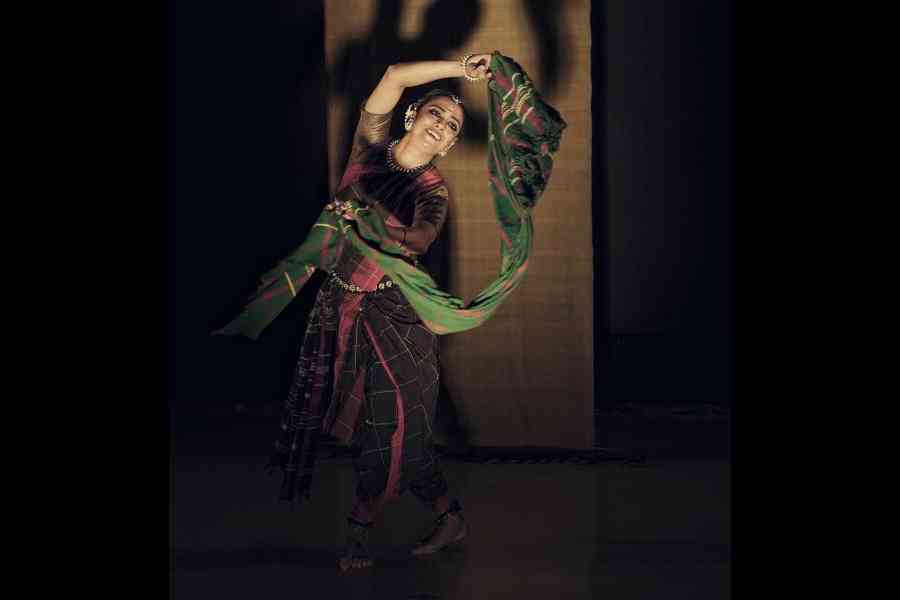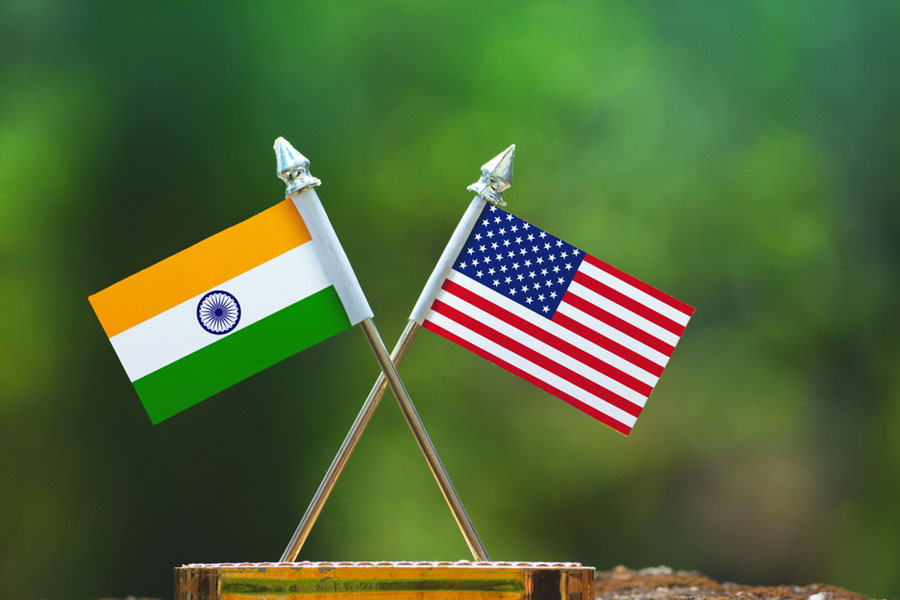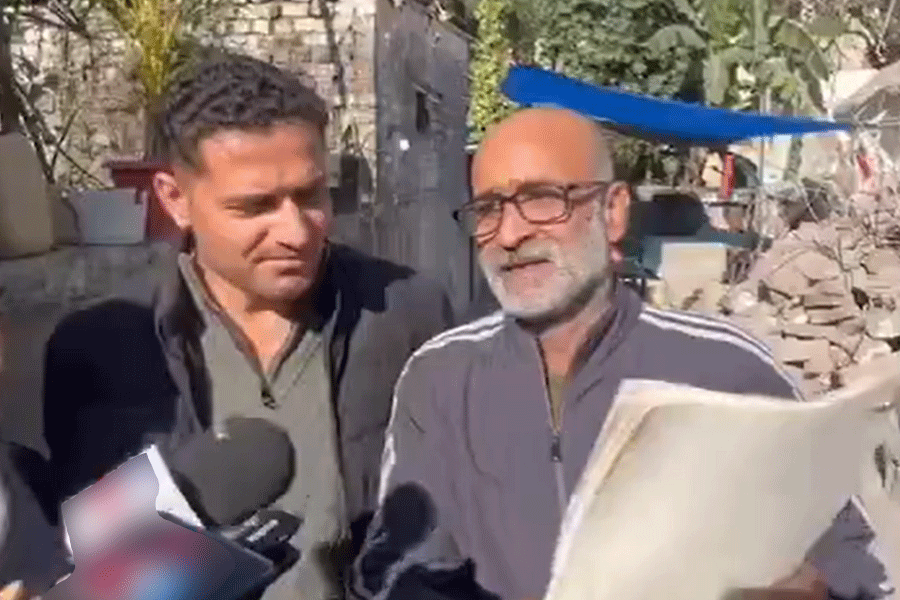The Kolkata Centre for Creativity, which recently hosted a landmark exhibition, Textiles from Bengal: A Shared Legacy, concluded the show with a performance titled Apar-Kaya presented by the Odissi exponent, Shashwati Garai Ghosh. It was in the fitness of things that the piece that layered dance, mythology and textile traditions to explore parallel narratives of transformation and strength through the story of weaves should end a noteworthy showcase of nearly half a century of Bengal’s fabrics. Ghosh’s considerable dancing prowess, her remarkable virtuosity and poised telling of the tale of Vedavati and Sita — the former transforming into Ram’s wife in another time dimension to exact her revenge upon Ravan — made it a class act.
The poignant themes of injustice, rigidity, anger, gentleness and power were explored through the work, choreographed and conceived masterfully by Sharmila Biswas. Originally created for a group of dancers, Apar-Kaya has been refashioned as a solo piece and Ghosh ensured that it dazzled in her interpretation of it. A striking mover, she animated the allegory with characteristic energy, her expressions soaring and swelling as she described the trajectory of the chronicle, her control over time and space as impeccable as ever. Motifs delicately appeared, diminished and morphed, as the vibrant choreography pulsed through the piece in which bodies became carriers of memories and transformations in the way that textiles bear heritage and innovation within them.
The compelling power of the drama was heightened by the music created by Srijan Chatterjee, Dukhishyam Tripathy and Bijaya Kumar Barik. The story was told through weavers’ songs from Odisha that equate the rigidity of the warp with Vedavati and the soft fabric that emerges from the loom with Sita. It is Vedavati’s fire that lives on in Sita, seething with resentment and seeking retribution until she finds liberation in understanding Sita’s quiet resilience. Apar-kaya movingly questioned the perception of power and recognised the impact of gentleness. At a time when the world is busy flexing muscles and baying for blood, iterations that talk about empathy fulfil an important purpose of art which is to propose new challenges to societal norms.










